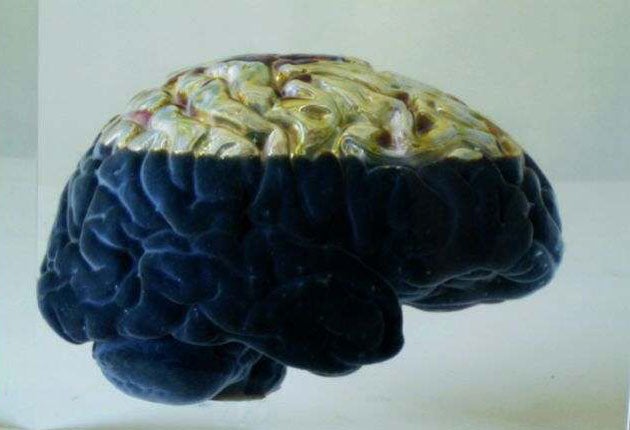Till death do us sculpt: Russian to render human bodies into art materials
Fancy a long-lasting keepsake of your loved one? What better than a statue made from the resin of their mortal remains? Andrew Johnson reports

Your support helps us to tell the story
From reproductive rights to climate change to Big Tech, The Independent is on the ground when the story is developing. Whether it's investigating the financials of Elon Musk's pro-Trump PAC or producing our latest documentary, 'The A Word', which shines a light on the American women fighting for reproductive rights, we know how important it is to parse out the facts from the messaging.
At such a critical moment in US history, we need reporters on the ground. Your donation allows us to keep sending journalists to speak to both sides of the story.
The Independent is trusted by Americans across the entire political spectrum. And unlike many other quality news outlets, we choose not to lock Americans out of our reporting and analysis with paywalls. We believe quality journalism should be available to everyone, paid for by those who can afford it.
Your support makes all the difference.It gives a grim new meaning to the term body art. A leading contemporary Russian artist says he has perfected a technique to boil human corpses into crude oil from which he will create permanent sculptures, and he has already signed up willing volunteers.
Andrei Molodkin, who will represent Russia at this year's Venice Biennale, claims that after spending three to six months in a high-pressure machine, a corpse becomes oil that can be used to power cars or be moulded into a permanent memorial statue to sit on the mantelpiece.
His work is the ultimate extension of a growing trend for artists to use human bodies as art materials. The sculptor Marc Quinn made a study of his head from his frozen blood; Gilbert and George regularly use bodily fluids in their art, and Günther von Hagens's Body Worlds exhibition of preserved corpses is on at London's O2.
Paris-based Molodkin, 43, has already signed up the BBC reporter Sasha Gankin, who wants to be rendered into a sculpture of a brain, as well as a French porn star, Chloé des Lysses, who wants to be turned into a model of praying hands. Conscious he may have to wait several decades before putting these plans into action, Molodkin has also signed up some HIV sufferers in New York, whom he expects to die "in one or two years".
The artist says the machine acts like a pressure cooker as it applies heat to a corpse, turning it into "yellowish, sweet crude". This can be turned into petrol or gas, or poured into a transparent mould to become an "oil sculpture". He has already tested the machine with a dog.
"It only takes two or three months to turn a body into crude oil," he said. "As soon as I learnt that oil is made out of organic matter I thought it would be a really great idea. When you're driving in California where dinosaurs used to live it's good to think that the car is being run on dinosaurs. Maybe this is a way to solve the energy crisis. To turn Sasha into oil will take up to six months. I cut the body into a few parts and put it in the accelerator and apply high pressure and temperature. I have signed contracts with Sasha and Chloé. I'm also looking for older people, and I have signed some people in New York who will die in one or two years because they have HIV. Someone may want to give the oil to their parents to put in their car, or to be turned into gas to light a lamp for a few months, or as a memorial sculpture."
Molodkin, a former Soviet soldier, adds that the machine he will use will produce between 1.5 and 2.5 litres of oil. He is already known for his so-called "liquid sculptures" of oil and light and will exhibit in London for the first time between April and June before going to Venice. Much of his work is inspired by oil because he had to deliver it while serving in Siberia as a soldier.
His plan to turn corpses into oil follows a recent trend among artists to address the final taboo. Last year the German artist Gregor Schneider advertised for someone who would be willing to die in an art gallery, and the Wellcome Trust displayed portraits of people pictured shortly before and after death.
Mr Gankin, 47, said he agreed to donate his body after interviewing Molodkin for the BBC World Service. "It started off as a joke, but then I thought, why not?" he said. "I work a lot in Africa. There is a lot of disease, such as malaria, and my death could happen any day. I haven't told my family yet, or thought about how my funeral might take place. Perhaps I'd better start thinking about that."
Join our commenting forum
Join thought-provoking conversations, follow other Independent readers and see their replies
Comments